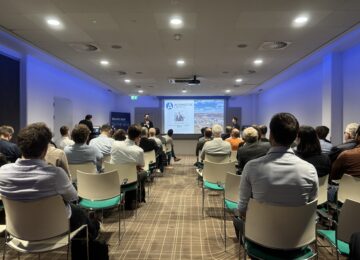Validation yields large-scale energy storage Delta21
With a grant from the "Opportunities for West 2" program, bureau CEDelft conducted an energetic and economic analysis in the Dutch market for large-scale storage. In doing so, CEDelft has estimated the potential benefits from energy balancing, benefits from reducing grid congestion by 2035, and so-called societal benefits resulting from the construction of Delta21.
Through a sounding board group, Delta21's sponsors and a number of key parties were closely involved in the study.
The main question this research answers is: What roles can Delta21 play in the energy system and what is the future business case and social value of different configurations of the fall lake for these different roles?
In doing so, CEDelft looked at three facets: electricity markets, grid congestion and the social values not reflected in the business case. As part of the electricity markets, two methods were applied. Business case modeling was performed for 2035 and a levelized cost of storage (LCOS) analysis. The LCOS analysis was conducted to better understand Delta21's future competitive position against alternative technologies.
With commitment to energy markets, there may be a profitable business case for the fall lake in 2035. However, this applies only with high electricity prices, favorable financing parameters and net storage rebates.
Delta21 business case electricity markets
The business case was calculated for 2035 for three of the major electricity markets, namely the day-ahead, imbalance and aFRR markets. Due to the large uncertainties, times beyond 2035 have not been considered. The business case for the 6 GW configuration is better because costs increase less than revenues compared to the 2 GW variant. The most favorable business case is in scenarios with tariff discount, favorable financing (5.8%) and high prices. In scenarios with lower energy prices and/or higher investment costs, current markets are insufficient for a profitable business case.
Comparison of other techniques: levelized cost of storage
A comparison was made with other sources of flexibility based on the levelized cost of storage (LCOS), or cost per MWh delivered, as an interpretation for the business case. The study shows that Delta21's LCOS is cost competitive when financing is favorable and a high number of full-load hours are used. If Delta21 is used for few hours, the technology is not cost-competitive with lithium-ion batteries and hydrogen plants, but is cost-competitive with flow batteries.
Delta21's fall lake is envisioned in the Rotterdam region. The role of electricity there will increase significantly in the coming decades, requiring substantially more transmission of electricity through the high-voltage grid. Rotterdam is unique compared to other regions in the Netherlands since bottlenecks are expected to arise for both discharge (in case of surpluses from offshore wind) and supply of electricity (in case of high demand and low production from offshore wind). If so, there is added value for the fall lake since storage can accommodate both surpluses and shortages, unlike some other flexible sources.
The main conclusions about the impact of the fall lake on grid load are:
- The drop lake can contribute to reducing the exceedances on 380 kV links, with optimal use of the drop lake for grid congestion management.
- Without deployment of other flexible sources, bottlenecks arise mainly for discharge of local surpluses. In that case, the fall lake can solve all bottlenecks in both the 2 GW and 6 GW configurations.
- The deployment of electrolysis and interconnection is expected to create new supply bottlenecks (local shortages) that cannot be fully resolved by deployment of the fall lake.
- The 6 GW fall lake configuration may contribute more to reducing peak load and exceedance than the 2 GW configuration by accommodating larger peaks.
- The fall lake investor receives compensation from TenneT for reducing the grid load. The estimated compensation is € 80-100 million per year for the 2 GW configuration and € 120-150 million per year for the 6 GW configuration.
- The fall lake only needs to be used for grid congestion management for part of the year (700 hours with no other flex, 250 hours with electrolysis only, 600 hours with electrolysis and interconnection).
Flexibility generally has an insufficient business case for required capital. This would require additional policies. The cost comparison (levelized cost of storage) shows that with advantageous financing, Delta21 is expected to be cost competitive with other technologies.
The fall lake can prevent grid reinforcement in the Rotterdam region, if deployed in a grid-friendly way. Delta21 can also prevent investments in renewable energy and grid reinforcement in the rest of the Netherlands, thus promoting the incorporation of offshore wind and solar farms and contributing to security of supply.
In addition, the fall lake could result in lower energy costs of up to €1.8 billion per year for households.
Download for more detail partial report 3 CEDelft
Source: Delta21





